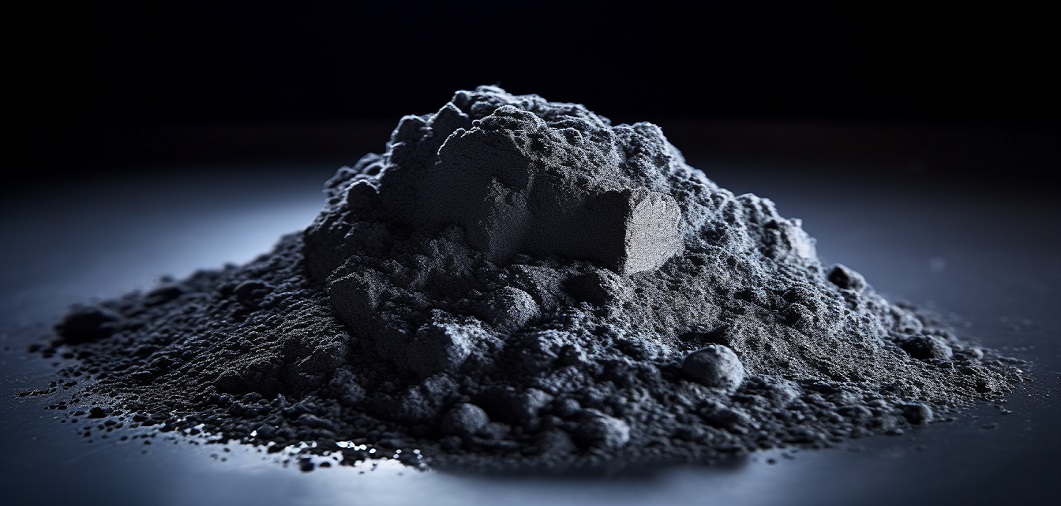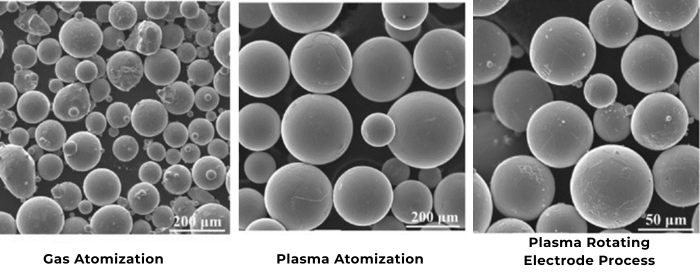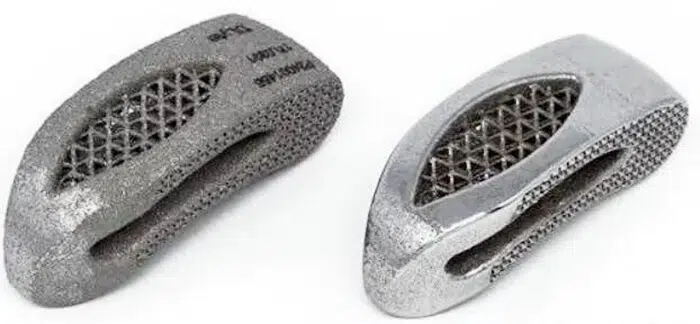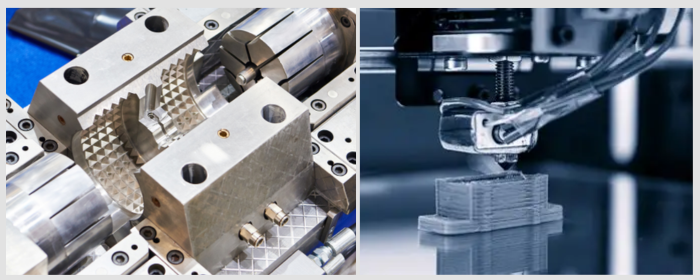

Metal alloy powders are finely divided particles made from the combination of two or more metallic elements. These powders are produced using physical or chemical methods, resulting in uniform composition and properties.
The properties of metal alloy powders vary depending on their specific composition and manufacturing process, but they generally exhibit the following common characteristics.
1. High Strength: Alloy powders produced through powder metallurgy can form fine grain structures, where the grain boundaries act as barriers to dislocation movement, thus enhancing the strength. Additionally, the different elements in the alloy form solid solutions, further increasing material strength.
2. High Hardness: Alloy powders often contain hard phases such as carbides and nitrides, which are uniformly distributed in the matrix, thereby improving hardness.
3. Corrosion Resistance: Metal alloy powders produced through powder metallurgy have a uniform microstructure, reducing local galvanic effects and pitting corrosion, thus enhancing corrosion resistance.
4. High-Temperature Resistance: Some metal alloy powders contain thermally stable phases like oxides and carbides, which remain stable at high temperatures, thereby improving high-temperature performance.
5. Uniformity: The manufacturing process of alloy powders uses precise particle control techniques, such as gas atomization and electrolytic deposition, ensuring uniform particle size and distribution.
6. Good Processability: Alloy powders, manufactured through mechanical alloying or atomization techniques, have uniform particles, making them easy to press and form.
As a powder form of metal alloy, how do metal alloy powders compare to metals, alloys, and metal powders?
Greater Design and Forming Flexibility:
Traditional metals and alloys are limited in manufacturing complex shapes and precision parts by casting and machining processes. Metal powders also face similar constraints, but metal alloy powders can achieve more versatile designs by mixing different compositions.
Superior Mechanical Properties:
Pure metals typically have lower mechanical properties. While alloys may struggle to achieve completely uniform distribution in solid form, alloy powders can better control microstructure and performance through powder metallurgy. Metal powders generally lack the diverse strengthening mechanisms of alloy powders.
Enhanced Corrosion and High-Temperature Resistance:
Pure metals often lack these properties. Alloys may find it challenging to achieve the same enhancement effects when adding elements in solid form. The corrosion and high-temperature resistance of metal powders are also inferior to alloy powders.
Better Surface Properties:
Traditional metals and alloys struggle to achieve uniform and high-performance surface coatings. Metal powders are less effective in coating applications compared to alloy powders.
After understanding the above common properties of alloy powder and its comparative advantages, we should explore their different types and applications in depth.
Titanium Alloy Powders are fine particles made from titanium mixed with elements like aluminum and vanadium, offering high strength, low weight, and excellent corrosion resistance.
Main Types:
Ti-6Al-4V Powders: Main components are approximately titanium (Ti), 5.5-6.75% aluminum (Al), and 3.5-4.6% vanadium (V). It has excellent strength and corrosion resistance.
Ti-5Al-2.5Sn Powders: Main components are approximately titanium (Ti), 4-6% aluminum (Al), and 2-3% tin (Sn). This titanium alloy powder has good weldability and moderate strength.
Ti-6Al-7Nb Powders: Main components are approximately titanium (Ti), 5.5-6.5% aluminum (Al), and 6.5-7.5% niobium (Nb). Ti-6Al-7Nb is mainly used for biomedical devices.
Main Applications:
Aerospace: Used in aircraft structural components and engine parts that require high strength-to-weight ratios and high-temperature resistance.
Medical Implants: This type of powders have good biocompatibility and strong corrosion resistance, making them ideal for artificial joints, bone plates, dental devices, and other biomedical instruments.
Sporting Goods: Titanium-based powders are used in high-performance sports equipment like bicycle frames and golf clubs due to their high strength, lightweight, and durability.
Iron Alloy Powders are fine particles composed of iron mixed with other elements such as nickel, chromium, or molybdenum. They are known for their high strength, wear resistance, and corrosion resistance.
Main Types:
Low Alloy Steel Powders: Such as iron-nickel alloy (Fe-Ni), mainly composed of iron (Fe) and nickel (Ni).
Stainless Steel Powders: Such as 304L (Fe-Cr-Ni), mainly composed of iron (Fe), chromium (Cr), and nickel (Ni); 316L, mainly composed of iron (Fe), chromium (Cr), nickel (Ni), and molybdenum (Mo).
Main Applications:
Structural Parts: Used in automotive, construction, and machinery because of their high strength and wear resistance.
Tool Manufacturing: Used to make various cutting tools, molds, and stamping tools.
Food Processing Equipment: Stainless steel powders are widely used in food processing, storage tanks, and beverage dispensers due to their hygiene properties, corrosion resistance, and ease of cleaning.
Nickel-Based Alloy Powders are fine particles made from nickel combined with elements like chromium, molybdenum, and niobium. These powders offer excellent high-temperature strength, oxidation resistance, and corrosion resistance.
Main Types:
Inconel 625 Powders: Main components are approximately nickel (Ni), 20-23% chromium (Cr), 8-10% molybdenum (Mo), and 3.15-4.15% niobium (Nb).
Inconel 718 Powders: Main components are approximately nickel (Ni), 17-21% chromium (Cr), 4.75-5.5% niobium (Nb), and 2.8-3.3% molybdenum (Mo).
Hastelloy C-276 Powders: Main components are approximately nickel (Ni), 15-16.5% chromium (Cr), 15-17% molybdenum (Mo), and 3-4.5% tungsten (W).
Main Applications:
Aerospace: Like titanium alloy powders, nickel-based alloy powders are used to manufacture aerospace components such as turbine blades, engine parts, and jet engines due to their high-temperature strength and oxidation resistance.
Chemical Equipment: Used to make corrosion-resistant chemical equipment and pipelines.
Energy Industry: Used in high-temperature gas cooling systems.
Aluminum Alloy Powders are fine particles made from aluminum mixed with elements such as silicon, magnesium, and copper. These powders are lightweight and have good strength, excellent corrosion resistance, and high thermal conductivity.
Main Types:
AlSi10Mg Powders: Main components are aluminum (Al), 9-11% silicon (Si), and 0.2-0.45% magnesium (Mg). It has excellent casting performance and moderate strength.
Al6061 Powders: Main components are aluminum (Al), 1.0% magnesium (Mg), 0.6% silicon (Si), and 0.28% copper (Cu).
Main Applications:
Aerospace: Used in the manufacture of aircraft and spacecraft components due to its lightweight and high strength.
Automotive Industry: Used in lightweight automotive parts.
Consumer Electronics: Used in the manufacture of casings for phones, laptops, and other electronic devices.
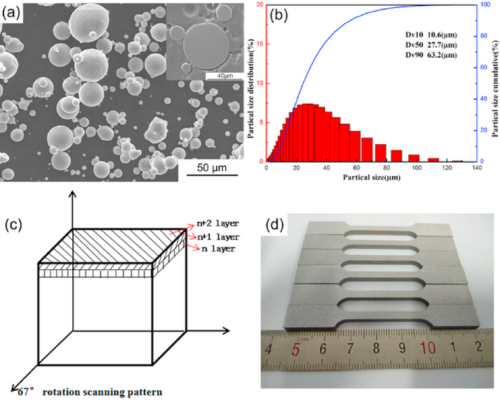
Fig 1. morphology and size distribution of the alloy powder[1]
Copper-Based Alloy Powders are fine particles composed of copper combined with elements such as tin and zinc. These powders exhibit excellent electrical and thermal conductivity, good corrosion resistance, and high ductility.
Main Types:
Bronze (Copper-Tin Alloy) Powders: Main components are copper (Cu) and tin (Sn).
Brass (Copper-Zinc Alloy) Powders: Main components are copper (Cu) and zinc (Zn).
Main Applications:
Electronics and Electrical: Used to make electrical contacts, radiators, and electronic packages.
Refrigeration Equipment: Used to make heat exchangers and condensers.
Decorative Materials: Used in building decoration and artworks.
Cobalt-Based Alloy Powders are fine particles composed of cobalt mixed with elements such as chromium, tungsten, and carbon. These powders are known for their high temperature strength, excellent wear resistance, and good corrosion resistance.
Main Types:
Stellite Alloys Powders: Main components are cobalt (Co), chromium (Cr), tungsten (W), and carbon (C).
Cobalt-Nickel Alloy Powders: Main components are cobalt (Co) and nickel (Ni).
Main Applications:
Medical Devices: Used to make dental alloys and surgical implants.
Aviation Engines: Used to make high-temperature turbine blades and combustion chambers.
Industrial Tools: Used to make wear-resistant cutting tools.
Tungsten-Based Alloy Powders are fine particles made from tungsten combined with elements such as nickel, iron, or carbon. These powders are known for their high hardness, excellent wear resistance, and ability to maintain strength at high temperatures.
Main Types:
Heavy Tungsten Alloy Powders: Main components are tungsten (W), nickel (Ni), iron (Fe), or copper (Cu).
Tungsten Carbide Alloys: Main components are tungsten (W) and carbon (C).
Main Applications:
Cutting Tools: Used to make drill bits, milling cutters, and turning tools due to their high hardness and wear resistance.
Protective Materials: Used to make radiation shielding and bulletproof materials.
High-Temperature Components: Used to manufacture high-temperature furnace components and jet engine parts.
Stanford Advanced Materials (SAM) is at the forefront of powder development, providing a wide range of high-quality alloy powders. For more information about these powders, please feel free to contact us and check out our homepage.
Each type of metal alloy powder has unique properties and applications due to its specific composition and manufacturing process. From titanium to tungsten, these powders play a crucial role in advancing technology and industry by providing materials that meet specific performance requirements. As technology evolves, the applications of these alloy powders continue to expand, further underscoring their importance in modern manufacturing and innovation.
[1] Li, Ruidi & Chen, Hui & Chen, Chao & Zhu, Hongbin & Wang, Minbo & Yuan, Tiechui & Song, Bo. (2018). Selective Laser Melting of Gas Atomized Al–3.02Mg–0.2Sc–0.1Zr Alloy Powder: Microstructure and Mechanical Properties. Advanced Engineering Materials. 21. 1800650. 10.1002/adem.201800650.

